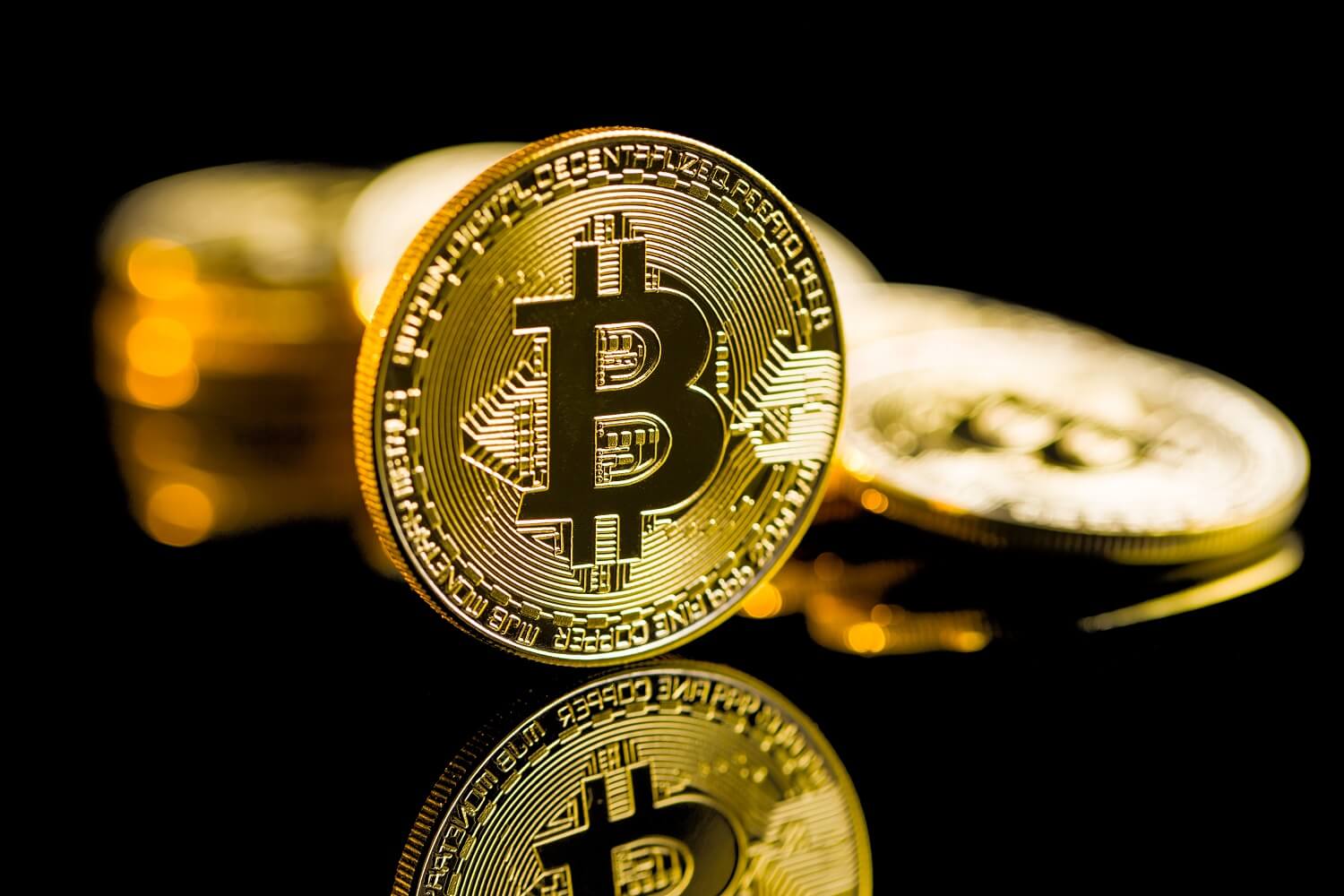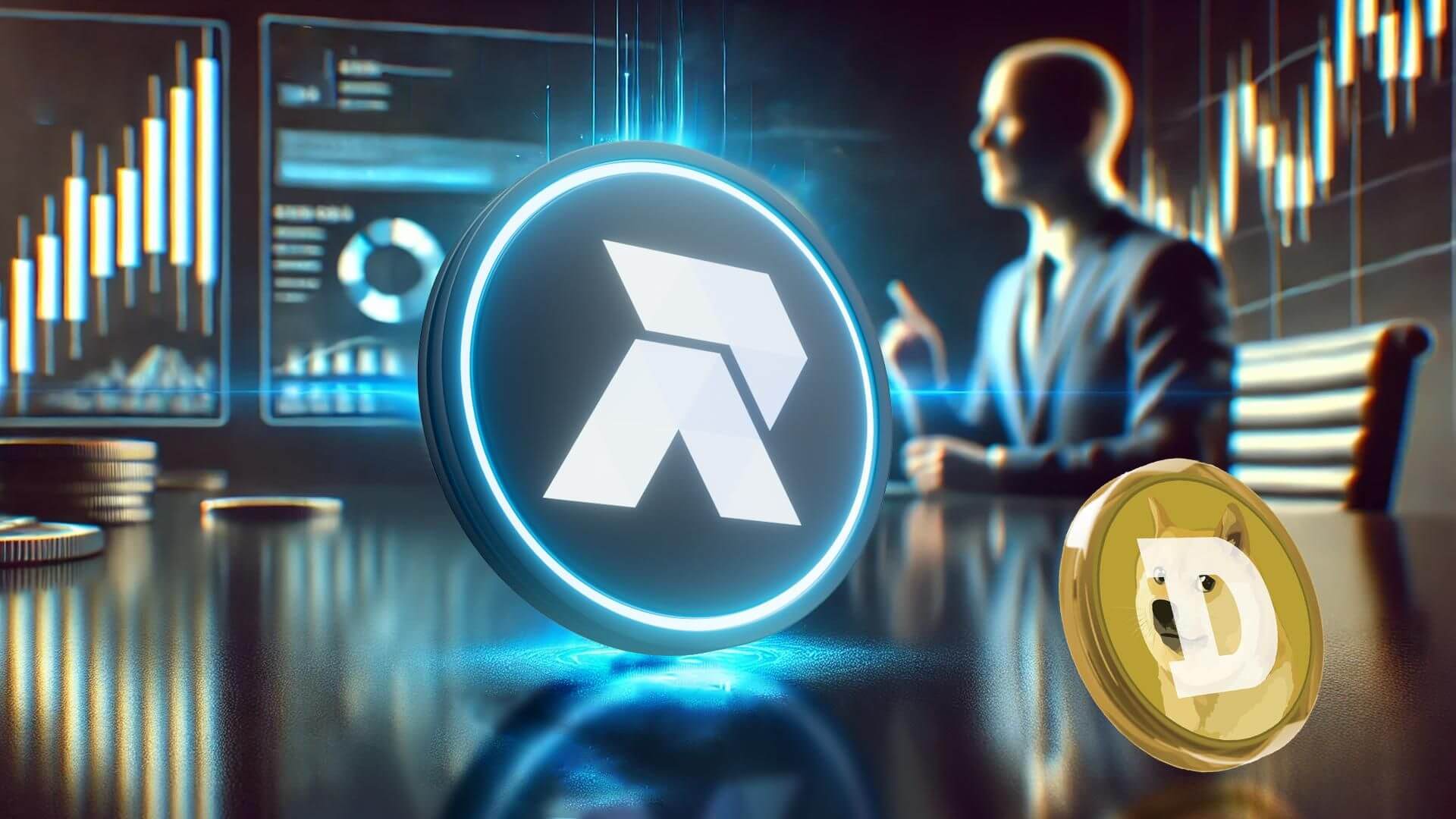What is Dogecoin & How Does it Work? - DOGE for Beginners
Dogecoin (DOGE) is a cryptocurrency that was created in 2013. It was created by developers Billy Markus and Jackson Palmer, who made it as a joke coin, inspired by the ‘doge’ meme that was popular at the time, featuring a Shiba Inu.
After a while, Palmer decided to step away from the project, believing that it had no future and that the joke had gotten old, however, the coin became a crypto community favorite, and it managed to remain popular to this day. Recently, it attracted the attention of Tesla CEO, Elon Musk, which catapulted its price higher than ever.
Why Was Dogecoin Invented?
As mentioned, Dogecoin originated as a joke cryptocurrency. Its creator thought it would be funny to create a coin based on a meme. Inspired by both the Doge meme and the cryptocurrency sector, Markus and Palmer set out to create a peer-to-peer (P2P) digital currency that could reach a greater number of people than Bitcoin.
At the time (December 2013), Bitcoin — and indeed, the entire crypto market — was mostly unknown, only used by developers, online criminals, and tech geeks. The sector’s short history was already tainted due to its ties to cybercriminals, accusations of money laundering, tax evasion, and the like. Plus, Bitcoin’s creator intended to use cryptocurrencies to take power away from the banks — this did not make the crypto sector popular among financial institutions.
Palmer and Markus decided to make a coin that would bring humour and lightheartedness to the controversial crypto industry, but also to make sure that it would distance itself from controversial coins. And so, on December 6th, 2013, Dogecoin was born. The word spread quickly, despite the small size of the crypto sector at the time, and DOGE already had over a million visitors in its first month of existence.
How Does Dogecoin Work and What Technology Is Behind It?
Dogecoin’s mechanics are based on Litecoin, which was one of the earliest ‘altcoins’, often known as the ‘silver to Bitcoin’s gold.’ DOGE uses Proof-of-Work technology, which means that it can be mined, much like BTC and LTC.
However, unlike Bitcoin and Litecoin, whose supplies are capped at 21 million and 84 million respectively, DOGE does not have a maximum supply and can be mined indefinitely. At the time of writing, Dogecoin has nearly 129 billion coins in circulation, while LTC has only 66.7 million coins, and Bitcoin has 18.6 million units.
Dogecoin is not a smart contract platform, so it doesn’t have dApps, DeFi protocols and other advanced features. Its main benefits are that it is cheap and fast, and it is a popular choice for transferring money between exchanges, as it has very low fees — much lower than Bitcoin or Ethereum.
But, since even fun money is still money, Dogecoin’s community has found many uses for their cryptocurrency. Of course, DOGE can always be used for trading and investing, like any other crypto, but in January 2014, DOGE also got into charity, with the community raising $30,000 in DOGE for the Jamaican bobsled team, in order to send it to that year’s Winter Olympics. They also raised $32,000 to supply Kenya with clean water. This has led many to understand that Dogecoin’s community is one of its strongest suits.
Is Dogecoin Real Money?
This is not a question where a simple ‘yes’ or ‘no’ will suffice. Dogecoin does have monetary value, and as such, it can be considered real money. However, as long as it is not officially recognized as money — and not only DOGE, but the rest of the crypto industry — it cannot technically be called money. We can call it digital money, although most people would consider that as something below “real” fiat money.
It is worth noting that Elon Musk, the second-richest person in the world in 2022 is a major fan of Dogecoin.
All in all, yes, DOGE is real money, even if naysayers and sceptics might not consider it as such. And, while the lack of a maximum supply limit doesn’t bode well for its future, DOGE may still be a valuable investment, given how popular it is becoming.
Fees and Expenses of Dogecoin
As mentioned, DOGE is a very cheap coin to use, which is why it is often used for transacting money. This has become a popular use, and for a long time, DOGE fees were next to nothing — only a fraction of a cent. This has been the case until recently, as 2021 brought a lot of attention to the coin.
As the price of DOGE increased, so did fees. Dogecoin reached the largest average fee around February 8th, while its price was surging as a consequence of viral attention from Elon Musk, and users of crypto-oriented Reddit groups. DOGE fans and holders initiated an ad-hoc viral marketing campaign to piggyback off of the success of other cryptos, and it worked, sending DOGE fees from less than $0.01 per transaction to $0.3125. This was the highest fee in Dogecoin’s history. At the time of writing, however, DOGE is still fairly popular, but its fees have dropped to a negligible amount.
Other than that, Dogecoin also has withdrawal fees on certain crypto platforms. Some platforms allow free DOGE withdrawals, but some have fees that can go from $0.05 to $0.11. Some platforms will even charge fees costing several dollars for large withdrawals.
What Are the Benefits of Dogecoin?
The biggest benefits of Dogecoin are its fast transaction processing speeds and low transaction cost.
As mentioned in the previous segment, even the highest transaction costs were only $0.31, which is practically nothing compared to Ethereum’s fees which can go up to $50, or Bitcoin’s which were known to go above $40 during particularly busy, high-volume periods.
Other than that, DOGE can be mined cheaply, and it can be used to send money to anyone, which makes it a great choice for making international transactions almost instantly. Plus, it can also be used for payments.
Originally, it was not very popular as no one was accepting it, but over the years, merchants willing to accept Dogecoin started to emerge, and more vendors are now accepting it as a means of payment for goods and services.
Transactions are transparent, fast, and secure, so DOGE might be a good choice if you can find those who accept it.
Finally, DOGE is very accessible. It can also be bought via multiple payment methods, such as; debit cards, PayPal, credit cards and more.
What is your biggest tip for a user getting into crypto?
"The most important thing for anyone getting into crypto is to be brave - doing something new is always scary, but if you apply the right safety measures it's usually a rewarding experience. Get curious, do some homework, ask questions, and then get involved. Just like any kind of purchase or investment, make sure you’re not using funds reserved for rent and mortgage payments. Beyond that, though, just give it a try."Stefan Rust
CEO of Laguna Labs
Can Dogecoin Be Used Anonymously?
We should note right away that Dogecoin is not a privacy coin — a class of cryptocurrencies that are meant to be used for anonymous payments. Thanks to blockchain explorers, most crypto transactions can now be followed with ease, especially since exchanges require their users to verify their accounts.
So, if you make an account on an exchange and verify your identity, then buy Dogecoin and withdraw it to your wallet, anyone can learn who that wallet belongs to, and how many coins you have in it. The only way to buy DOGE anonymously would be to use P2P platforms, where you would send individual money directly via a bank transfer or cash, and they would send DOGE to you.
That way, your wallet would not be tied to your identity. Another option is to mine the coin and obtain it directly from the source, but once again, your identity would become known as soon as you connect your wallet to an exchange where your account is verified.
The last option would be to use crypto mixers after purchasing coins on exchanges. That way, people would still be able to learn that you bought DOGE, but they wouldn’t know which coins are yours, or which wallet you hold.
How Safe Is Dogecoin?
Dogecoin is as safe as any cryptocurrency. In other words, you are always exposed to risks when it comes to the inherent volatility of crypto assets. Also, if you leave your coins on an exchange, they can be hacked and your coins could be permanently stolen from you. Using hardware wallets can help to prevent this.
Dogecoin itself is a safe coin. It is decentralized, and as such, it is obviously not a scam. It has never given any major promises that would attract people, other than the chance to own a very cheap token just for fun, so it never tried to attract investors and trick them through some scheme.
The only real danger would be 51% attacks on Dogecoin’s blockchain, but given that the coin is popular and it has over 1,300 full nodes, this should not be a major risk, as anyone conducting a 51% attack would have to hack more than half of devices that are running a full Dogecoin node. So, other than investing in it only to see its price drop, DOGE doesn’t come with major risks and dangers.
What Teams Are Working On Dogecoin Development?
Obviously, Dogecoin was worked on by Jackson Palmer and Billy Markus, its co-founders and original developers. For years, DOGE was wandering through the crypto industry rudderless, but the surging price and interest in the token have recently resurrected its tech development.
Dogecoin had a number of developers over the years, such as Michi Lumin and Ross Nicoll, who had previously contributed to the coin for the last time in October 2019. With DOGE being resurrected in 2021, Nicoll and four other developers have started working on upgrading the coin’s software. They found that the biggest problem is actually scalability, as the existing nodes allowed outbound connections, but not inbound ones, as node users are not disabling their firewall to allow incoming connections from peer nodes.
While DOGE doesn’t have a massive development team, it has a dedicated community that is trying to solve one issue at a time, which might be quite a task, given that technical development at DOGE did not move much over the past few years.
Which Financial Institutions Are Invested in Dogecoin?
So far, Dogecoin has not attracted major financial institutions. For the most part, financial institutions and institutional investors have opted to stick to Bitcoin and Ethereum, with a handful of them exploring certain decentralised finance (DeFi) projects.
DOGE, on the other hand, has attracted Elon Musk as a major supporter, although it remains unclear whether Musk has ever actually invested in DOGE or not. He frequently posts seemingly jokey tweets promoting DOGE but has not ever confirmed an investment.
Dogecoin Mining
Dogecoin mining, like mining any other PoW-based cryptocurrency, revolves around processing transactions and ‘solving’ blocks, which are then added to the blockchain. In return for doing this, miners receive new DOGE coins, which they can then sell, use, or keep.
Dogecoin uses the ‘Scrypt’ algorithm, like Litecoin. Its mining difficulty is much lower than that of Litecoin, however, which makes it possible to use simpler and cheaper equipment to mine the coin. Note that we did not say cheap equipment — just cheaper than what you would need for some other cryptocurrencies, such as Bitcoin.
Block time for Dogecoin blocks is only 1 minute, which makes DOGE 10x faster than Bitcoin, and 2.5 faster than Litecoin. On the other hand, the reward is significantly lower. BTC miners, for example, receive 6.25 BTC per block, which is approximately $363,600 according to Bitcoin’s price at the time of writing ($58,178 per coin). DOGE grants its users 10,000 DOGE per block, which is around $531 in total. Multiply this by 10, which is how many blocks DOGE solves while BTC solves one, and you get $5,315.
So, while Bitcoin solves one block and grants its miners $363,600 for their efforts, DOGE can solve 10 of them, but only grant $5,300.
What is the Difference Between Dogecoin and Bitcoin?
Dogecoin Wallet
Dogecoin has its own wallet that can be downloaded for mobile or other devices, but it can also be stored in many other wallets, such as the Trust Wallet, Trezor, Ledger Nano models, and others.
Of course, storing DOGE in your exchange wallet is the easiest method, as it will be instantly available for trading. However, this is not recommended as you will then not be the owner of the private keys, and if you don’t own the keys — you can never truly say that you own the coin. Plus, the funds can be stolen from the exchange if it gets hacked. If you were to lock up your DOGE in cold storage, only you would ever have access to it.
Is Dogecoin Worth the Investment?
In the end, this is something that investors need to decide for themselves. Dogecoin is a cryptocurrency and cryptos are still unregulated, highly volatile, and DOGE developers have a lot of catching up to do. So, while you could say that DOGE is not the best choice, that wouldn’t be entirely true, either.
The coin was never supposed to live this long, but it still charmed the community and managed to survive against all odds, even after its founder left, so anything is possible. Another endorsement from someone with the influence of Elon Musk could well lead to another huge spike in price but it’s difficult to predict the future DOGE price. UK investors interested in learning more about purchasing DOGE can check out our ultimate how to buy Dogecoin UK guide.
Frequently Asked Questions
Alternative Cryptocurrencies
Elastos
Maidsafecoin
sweatcoin
FUNToken
Vertcoin
News

Neptune adds 20 BTC to Bitcoin strategy, also buys 1m DOGE
4 February 2025 Canadian blockchain firm Neptune Digital Assets announced it purchased 20 BTC worth almost $2 million The company…
Dogecoin whale with $100M portfolio compares this $0.04 altcoin to DOGE at $0.0002, here’s when to buy
29 January 2025 Dogecoin was once an undervalued altcoin, trading around $0.0002, before making the 2021 millionaire surge to an…
Dogecoin price analysis: DOGE investor explains why they sold DOGE at $0.07 to buy WallitIQ at $0.04
29 January 2025 The cryptocurrency market is a dynamic landscape where fortunes can be made and lost in the blink…
‘Only a few will buy’ says top Dogecoin holder on this altcoin priced at $0.10 running for $1
28 January 2025 Dogecoin has gained 5.22% over the past 30 days, but a recent 8.53% decline in the past…
US government’s DOGE website launches with Dogecoin logo
21 January 2025 Department of Government Efficiency website launches with logo of Dogecoin. DOGE price reacts higher to hit $0.40.…
